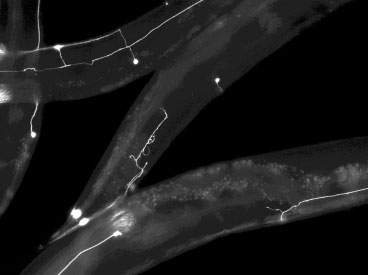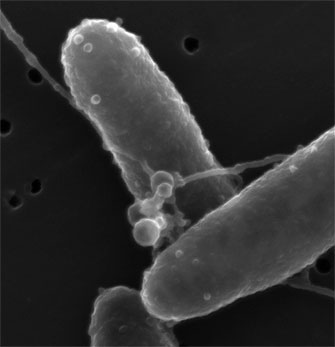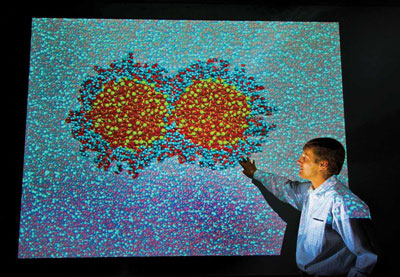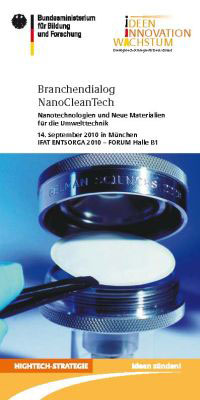Assistant Prof. Patrick C. H. Hsieh of Institute of Nanotechnology and Microsystems Engineering, College of Medicine, National Cheng Kung University (NCKU), Tainan, Taiwan, has led a research team of myocardial regeneration to conduct an experiment on pigs and has proved that by combining self-assembling peptide nanofiber hydrogel with autologous bone marrow stem cell, myocardial protection after acute myocardial infarction, vascular regeneration and heart functions can be improved.
Oct 12th, 2010
Read more
A*STAR's Institute of Materials Research and Engineering (IMRE) showcases R+D in polymer and nanocomposites that are used to produce new transparent high-barrier film packaging, low dental shrinkage materials, anti-scratch coatings, aerospace carbon-fibre reinforced polymers and soft, high-impact resistant protective padding.
Oct 12th, 2010
Read more
 Flat sodium-nickel chloride battery could improve performance, cost of energy storage.
Flat sodium-nickel chloride battery could improve performance, cost of energy storage.
Oct 12th, 2010
Read more
Contour Energy Systems, Inc. an innovative portable power company commercializing next-generation battery systems, today announced the acquisition of a breakthrough carbon nanotube technology that can dramatically improve the power capability of lithium-ion batteries, through an exclusive technology licensing agreement with Massachusetts Institute of Technology (MIT).
Oct 12th, 2010
Read more
 A faster way to look for drugs that regenerate nerve cells.
A faster way to look for drugs that regenerate nerve cells.
Oct 11th, 2010
Read more
 Specialized bacterial filaments shown to conduct electricity.
Specialized bacterial filaments shown to conduct electricity.
Oct 11th, 2010
Read more
What do a smart window company, a microbial analysis start-up and waste-heat recovery start-up have in common? They're all located in the San Francisco Bay Area and they're all based on technology developed at Lawrence Berkeley National Laboratory.
Oct 11th, 2010
Read more
 Sandia researchers use molecular dynamics simulations at the New Mexico Computational Center supercomputer to show that simple coatings are actually incapable of fully covering each spherical nanoparticle in a set.
Sandia researchers use molecular dynamics simulations at the New Mexico Computational Center supercomputer to show that simple coatings are actually incapable of fully covering each spherical nanoparticle in a set.
Oct 11th, 2010
Read more
 Beim Branchendialog NanoCleanTech des Bundesministeriums fuer Bildung und Forschung (BMBF) diskutierten Experten aus der Material- und Nanotechnologieforschung mit Fachleuten der Umweltbranche ueber Chancen und Herausforderungen.
Beim Branchendialog NanoCleanTech des Bundesministeriums fuer Bildung und Forschung (BMBF) diskutierten Experten aus der Material- und Nanotechnologieforschung mit Fachleuten der Umweltbranche ueber Chancen und Herausforderungen.
Oct 11th, 2010
Read more
At the exclusive invitation of Nature Physics, Wouter Roos and Gijs Wuite, respectively FOM researcher and FOM workgroup leader at VU University Amsterdam, discuss recent developments in the area of 'physical virology' in this month's issue.
Oct 11th, 2010
Read more
More brilliant X-rays, more cost-effective methods for developing new energy sources and advanced manufacturing processes are just some of the benefits which may come from a novel technology, proven at the theoretical level by a consortium of British and European laser scientists.
Oct 11th, 2010
Read more
Don't miss out on Riso Energy Day 2010 on 10 November 2010 in the Niels Bohr Auditorium at Riso National Laboratory for Sustainable Energy, Roskilde, Denmark.
Oct 11th, 2010
Read more
In Muenster entsteht ein neues Gebaeude fuer Nanotechnologieforschung.
Oct 11th, 2010
Read more
Green technologies key for IT industry profitability in 2020.
Oct 11th, 2010
Read more
Researchers at the Georgia Institute of Technology and Emory University have developed a novel approach for delivering small bits of genetic material into the body to improve the treatment of inflammatory bowel diseases.
Oct 10th, 2010
Read more
The discovery reveals that energy-carrying particles generated by packets of light can travel on the order of a thousand times farther in organic (carbon-based) semiconductors than scientists previously observed.
Oct 10th, 2010
Read more






 Subscribe to our Nanotechnology News feed
Subscribe to our Nanotechnology News feed